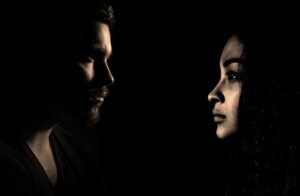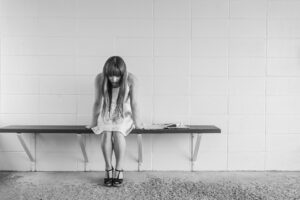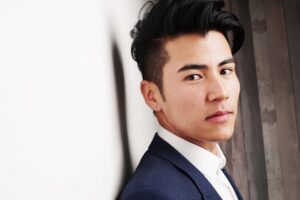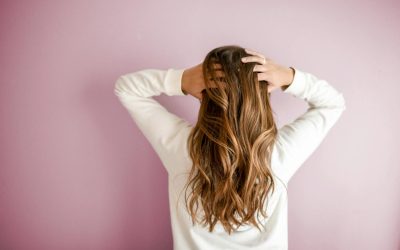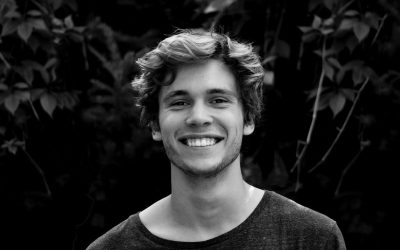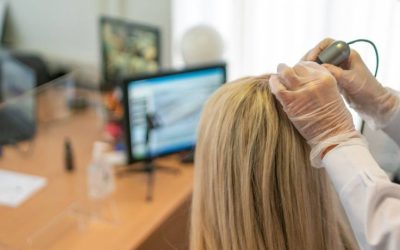Hair on the pillow? In the shower? On the brush? These occurrences are fairly common. So common that most people make nothing out of it.
It is understandable why many do not worry much about hair fall. After all, shedding some strands is usually a benign occurrence which poses no threat to one’s health. In fact, it is normal to lose hair every day.
Experts estimate that people lose 100 to 150 strands daily. While this may seem a lot, it actually is not considering that, on the average, a person has over 100,000 hair on the scalp.
Technically, 100 strands make up less than 1% of a person’s hair. Hence, there is no need to fret if you see hair on your brush or pillow. Furthermore, chances are high that it is nothing serious – just a part of the usual hair growth cycle.
It is a different story, however, if you are exceeding the normal range, if you are losing excessive hair for a prolonged period of time or if you are losing clumps of hair.
Why?
Excessive and/or prolonged hair shedding as well as losing clumps of hair can sometimes be tell-tale signs of a hair loss condition.
Hair Loss – Why People Dread It
Hair loss, medically called alopecia, is very common. After all, just like developing wrinkles, it is an inevitable part of ageing. Reports state that over 20 million women and over 30 million men suffer from it.
Alopecia usually does not cause a significant harm on a person’s health. It does not limit one’s physical capabilities, too. Moreover, it is not life threatening.
Yet, most people dread hair loss.
In one survey, over 90% of men said that what they fear the most about ageing is going bald. Women are no different than men in this aspect. Some even admit that they are too scared about losing their hair that it has become part of their daily worries.
What’s so scary about hair loss?
Well, society puts a premium on thick, beautiful-looking hair. To be more precise, those with a full head of hair are deemed youthful and attractive. Hence, those suffering from alopecia worry that hair thinning or balding would negatively affect their overall appearance. They believe it is going to make them look old, even cause them to be less desirable.
How Hair Loss Affects Men & Women
Those who do not suffer from it easily dismiss hair loss as a non-problem. This is not surprising given that this condition is not debilitating nor is it fatal.
The question is:
Is there truth to this belief?
For sufferers, hair loss is a serious problem – one with an enormous psychosocial impact.
Studies reveal that alopecia erodes the self-esteem of sufferers. It causes them to develop a negative self and body image. It breeds feelings of insecurities, making them think they are unattractive. In the long run, these things lead to a dip in their confidence.
What’s more:
Unhappy with how they look, some sufferers avoid socialising. They isolate themselves and sometimes experience depression.
Indeed, alopecia may be non-life threatening, but it can surely suck the life out of a lot of sufferers.
While both men and women struggle coping with hair loss, it is noted that women tend to have it harder than men. This may come as a shock since there is this popular belief that men have a more difficult time dealing with their condition. This notion stemmed from the fact that men go bald and women do not.
Here’s the thing:
Even if females do not experience balding, they are not spared from the stigma of not having a thick head of hair. Society still deems women with thinning hair old and less attractive. This is very different from balding men who are now seen as sexy and alluring.
Furthermore, most women consider their locks as an essential part of who they are. It helps define their overall persona. Losing it is tantamount to losing a part of themselves, a part of their identity.
Hence, many female hair loss sufferers experience emotional distress which prevent them from living a full life. Apart from their self-esteem, their relationships, both platonic and romantic, also suffer.
Undeniably, coping with alopecia is not a walk in the park for men and women alike. It is especially difficult when it begins at an early age.
Generally, men start showing signs of balding in their 30s. For women, thinning becomes more noticeable in their 40s.
However, the onset of hair loss in men and women, particularly the hereditary type, starts earlier. Male pattern baldness could start when men hit their 20s. In rare occasions, it could begin manifesting during their teenage years.
Meanwhile, for women, female pattern hair loss usually begins in their 30s, although recent studies are showing that it is happening much earlier for some. There are reports stating that a growing number of women in their 20s are starting to lose their hair.
There are also children who suffer from hair loss. Alopecia areata, classified as an autoimmune disorder, usually manifests earlier in life with most patients having their first episode before they reach 15 years old.
How Is Hair Loss Treated?
If you are suffering from hair loss, do not despair! There are treatments available which can reverse your condition or prevent it from progressing rapidly.
But before starting any hair loss treatment, you need to consult a dermatologist or a trichologist. This is because the cause needs to be determined first.
Remember:
There are various reasons why people lose their hair. It could be due to genetics, a vitamin deficiency, an autoimmune disease or an impulse control disorder.
Finding out what is causing the hair loss is essential in creating an effective treatment plan.
Basically, the kind of treatment you’d have depends on your age, the cause of the alopecia and the severity of your condition.
Take note:
Outcomes are better when the hair loss treatment is implemented early. So, it’s always best to immediately see your doctor when you notice signs of alopecia.
Also, certain hair loss conditions like alopecia areata have no cure. However, there are treatments which can promote hair growth and prevent the problem from worsening. Again, for these types of conditions, early treatment is the key to getting favourable results.
Below are the hair loss treatments available:
Medications
Alopecia may be treated with clinically proven medications. One widely used hair loss medicine is a topical solution applied on the scalp. Approved for both men and women, it is effective in preventing hair from becoming thinner and promoting the growth of new hairs.
There are also medicines which come in pill form. A drug prescribed to women works by reducing the production of androgens, particularly testosterone. Hence, they are called anti-androgens.
Similarly, a hair loss medicine meant for men blocks the production of dihydrotestosterone (DHT). This male hormone makes hair follicles shrink, preventing healthy hairs from growing. Results from studies showed that this drug slowed down hair loss in almost 90% of men. It has also helped hair regrowth in over 60% of men.
For hair loss due to inflammation like alopecia areata, what’s commonly used is corticosteroid. It is injected into the different affected areas of the scalp. Its purpose is to stop inflammation and consequently, promote the growth of hair.
A word of caution:
While these medications are effective in addressing hair loss, they are not instant cures!
You cannot expect results in a matter of days. It often takes months before noticeable improvements appear.
Furthermore, these drugs do not cure hair loss conditions like androgenetic alopecia (male pattern baldness and female pattern hair loss) as well as alopecia areata. While they may be used in the treatment of these conditions, they are meant to promote hair growth and/or slow down the progression of the hair loss.
Supplements
Supplements are usually given when hair loss is due to a nutritional or vitamin deficiency. For example, those with low levels of iron may be asked to take iron supplements.
These types of hair loss conditions are usually reversible. Once the deficiency is addressed, you can expect the shedding to stop.
Nowadays, the market is inundated with so-called supplements that stop hair fall or promote hair growth.
Do not fall for these claims!
Sometimes, instead of helping, these products can exacerbate your hair loss problem. So, for your safety, always consult your dermatologist before taking any of these supplements.
Topical Immunotherapy
This is considered one of the effective treatments for severe cases of alopecia areata, including alopecia totalis and alopecia universalis.
Based on studies, around 40% of those subjected to topical immunotherapy experienced hair growth after six months of continued treatment.
How is it done?
A medication is applied on the affected area. The drug is meant to cause an allergic reaction resulting in a rash. The exact mechanism behind this approach is still not fully understood. What’s clear so far is that the allergic reaction paves the way for the growth of new hair.
Laser Therapies
Low-level laser therapy is another hair loss treatment that’s used today. It is also called red light therapy, biostimulation therapy and cold laser therapy among others.
Proven to be effective in men and in women with androgentic alopecia, laser therapy is non-invasive and painless. It also has no known adverse effects.
How does it work?
A laser device (in the form of a comb, brush or helmet) is used on the affected area of the scalp, exposing it to photons. It is said that the photons revitalise weak cells, enabling follicles to grow new hair.
On top of increasing hair growth, this treatment also makes existing hair on the scalp stronger and thicker.
Repeated sessions are necessary for this treatment to be effective. What’s often recommended is for the therapy to be done two to three times per week for a number of months.
How long before you see results? It takes several weeks or months before results are observed.
Psolaren Plus Ultraviolet A (PUVA)
PUVA therapy is used in treating alopecia areata or cases involving massive or large areas of hair loss. It was initially developed for severe skin disease like psoriasis but has shown promise in treating hair loss.
A combination of psolaren, a drug that makes the skin more sensitive to ultraviolet light, and ultraviolet A light are used in this treatment protocol.
The process goes like this:
Psolaren is taken orally or administered topically. Then, the affected spots are exposed to ultraviolet A light. Exposure time depends on skin pigmentation and tends to become longer as the treatment progresses.
The number of sessions is determined based on the severity of the condition. The entire treatment usually takes five to six months to be completed.
Hair Transplantation
In advanced cases of hair loss where conventional treatment isn’t working, what is recommended is hair transplantation.
There are two widely used techniques in transplanting hair: Follicular Unit Transplantation (FUT) and Follicular Unit Extraction (FUE).
In FUT, a strip of scalp where active hair growth exists, usually from the back of the head, is removed. Next, the follicles are detached from the strip of skin. These follicles are then planted into the bald spots on the scalp.
Meanwhile, in FUE, there is no need to take a strip of skin. What happens here instead is that the follicles are extracted directly from the scalp. Then, they are inserted into the areas where hair is absent.
After the transplant, hair starts growing in small clusters. It takes around six months for its effect to become noticeable.
One good thing about this surgery is that enables patients to have natural-looking hair again.
What’s more:
This procedure offers a more permanent solution than other hair loss treatments.
There are disadvantages, though.
For one, hair transplant is not for everyone. You need to meet certain criteria to qualify for this procedure.
Also, the transplant needs to be repeated several times to achieve a favourable outcome. Breaks are necessary in between procedures. Hence, it can take a while for the transplant to be completed.
Plus:
Hair transplantation can be expensive.
Behaviour Therapy
Behaviour therapy is the treatment used for trichotillomania, an impulse disorder which results in hair loss.
One type of behaviour therapy which is noted to be effective in treating trichotillomania is habit reversal training.
In this therapy, the goal is to make sufferers more aware of their hair-pulling habit and recognise situations that trigger this behaviour. More importantly, it should help them change their behaviour when they get pulling urges like clasping their hands or clenching their fists.
Hair loss treatments can be simple and straightforward like taking supplements or complex like a hair transplant.
Only a hair and scalp specialist can determine which treatment is best for you. So, make sure you see a dermatologist or a trichologist right away if you have excessive and/or prolonged hair shedding.
Want to know what hair loss treatment can effectively address your hair loss problem? Call us at 01 6793618 and schedule an appointment with our specialist.
—
Image by S. Hermann & F. Richter from Pixabay
Image by R A from Pixabay
Image by Ryan McGuire from Pixabay
Image by Jerzy Górecki from Pixabay
Image by melancholiaphotography from Pixabay

